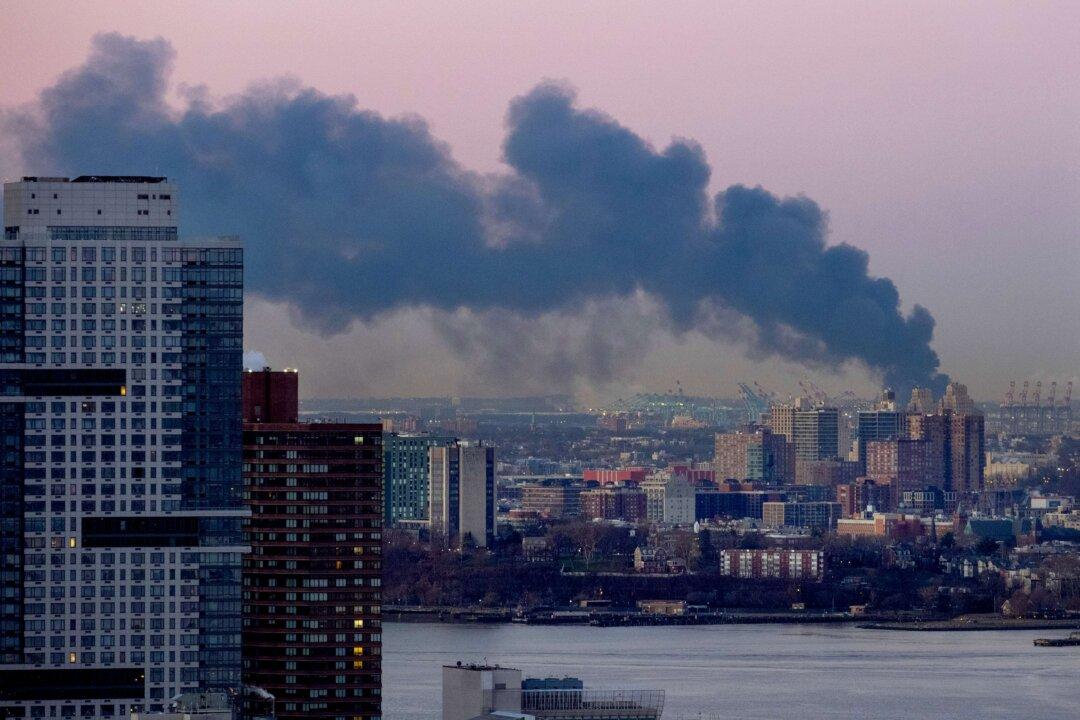ELIZABETH, N.J.—Over 100 firefighters battled a blaze Friday at a New Jersey industrial park that was home to the Singer Sewing Machine factory for more than a century.
A passerby reported the fire around 5:30 a.m., Mayor J. Christian Bollwage said.
No one was in the building and no injuries were reported, he said.
Two roofs and one wall collapsed, but the fire was burning in several buildings closest to the waterfront, away from the oldest historical portion of the building, Mr. Bollwage said.
“The iconic portion of the building is not threatened, nor do we expect it to be,” the mayor said.
Prevailing winds were helping by blowing flames away from the rest of the complex, he added.
More than 100 firefighters were on the scene of the four-alarm fire, a classification requiring one of the highest levels of response in the city, officials said. Mutual aid assistance was being given by numerous area fire departments, and New York City lent firefighting boats to help battle the blaze.
Video from the scene shows a building engulfed in flames with firefighters surrounding the structure. The large industrial complex is just south of Newark Liberty International Airport and across a strait from the New York City borough of Staten Island. A huge plume of smoke could be seen from Manhattan.
The cause of the fire is under investigation, and the blaze itself could take several days to extinguish, Mr. Bollwage said.
In 1873 the Singer Sewing Machine Manufacturing Company purchased 32 acres at the site, and established the factory where it would make the iconic machines for more than a century. It was the largest workforce plant in the world for a single establishment at the time.
Located on Elizabeth’s waterfront near Newark Bay, the Singer factory was a powerhouse of the Industrial Revolution, churning out sewing machines in the days when many people made their own clothes instead of buying them in stores.
The plant also periodically was pressed into service during wartime, re-tooling itself to make munitions and parts for military airplanes and machinery during the two world wars, according to the British web site www.singersewinginfo.co.uk.
During World War II, with steel and aluminum increasingly needed for munitions, the manufacture of sewing machines at the plant was halted from 1942 until 1945, though the facility continued to make spare parts.
After the war, the plant was cranking out 10,000 sewing machines a year, and as many 40,000 workers punched a clock there.
But its business declined in the 1970s and 1980s, and the facility shut down in 1982. It was later divided into smaller sections to house small businesses. Public records show the building sold for $1 million in August.







